Pick Your Color
Story and Photos by Trevor Hunter
The Contenders
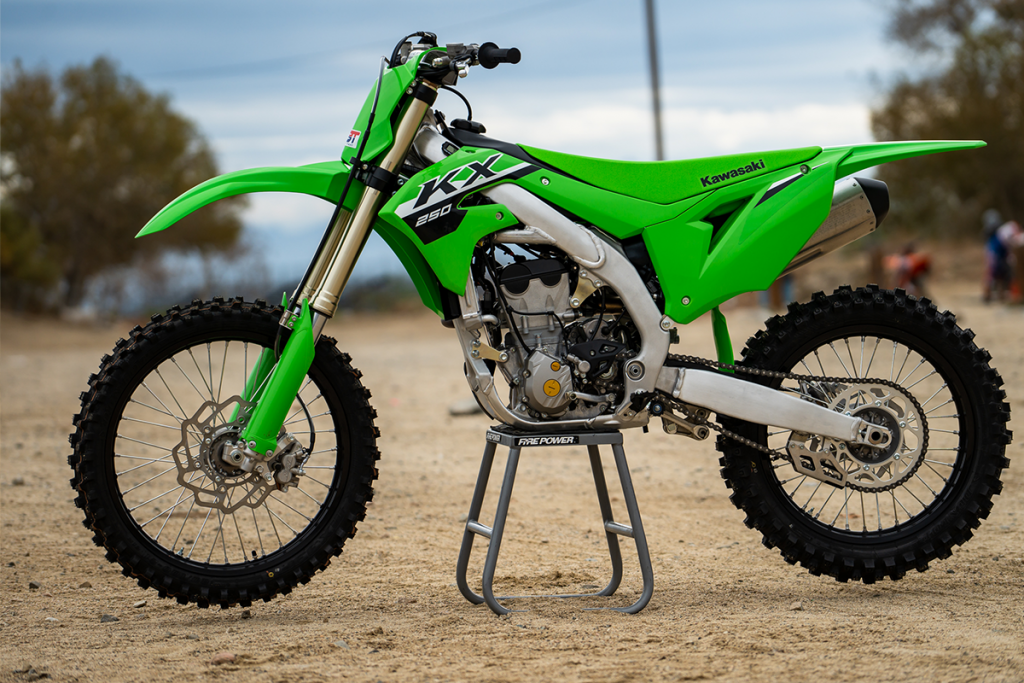
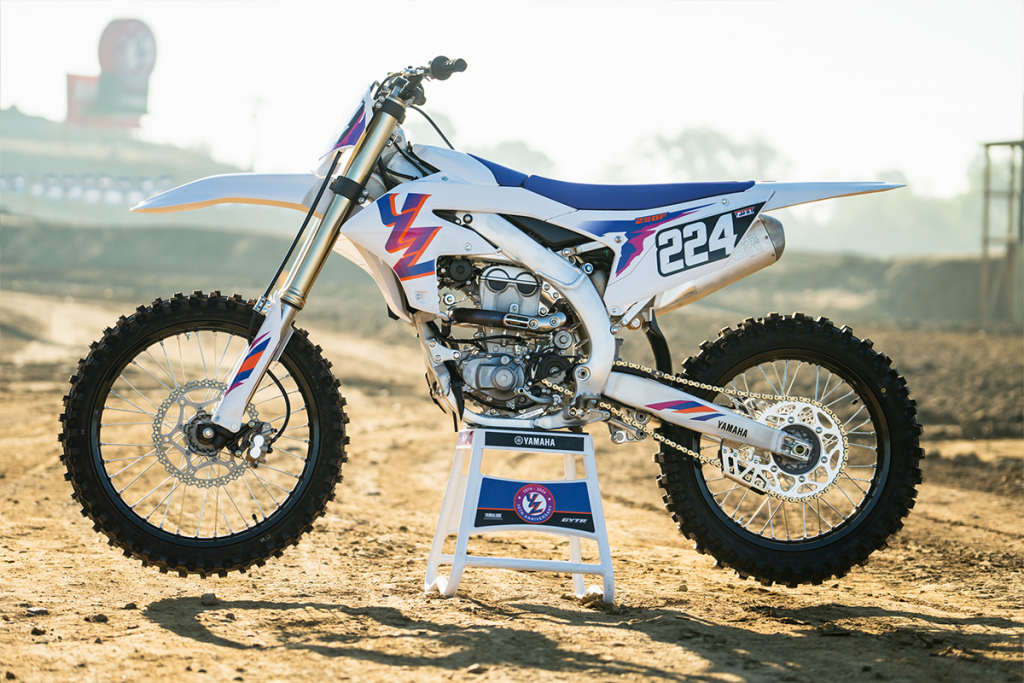
Over the past couple of years, Yamaha’s YZ250F(X) and Kawasaki’s KX250(X) have been some of our favorite quarter liter, four-stroke bikes. To no one’s surprise, the Yamaha is so strong in the engine department, has some of the best stock suspension and components, and it’s all outfitted in a good chassis. The Kawasaki is another with a very strong engine package, primarily in the top end power, has one of our favorite chassis’, and is plain fun to ride and race. With Yamaha redesigning a lot of its YZ250F for 2024, we wanted to pit them against each other and see how they compare on the track.
Power
Both bikes are very competitive in this department. The Kawasaki has been a screamer over the past few years, and that’s no different in 2024. While it doesn’t boast the most torque or low-end power, as the RPMs build, so does the power in an exponential way. The lively, free-revving engine does most of its work high up in the RPM range, like most 250F’s do, and the later you upshift, the better it gets. We’re willing to say the KX is one of, if not the most impressive motors on top-end where it pulls hard and far. The bike doesn’t have the juice to recover when you dip into the low RPMs, but it does have good throttle response and a quick stab of the clutch goes a long way on this bike and can get you back into the power in a hurry.
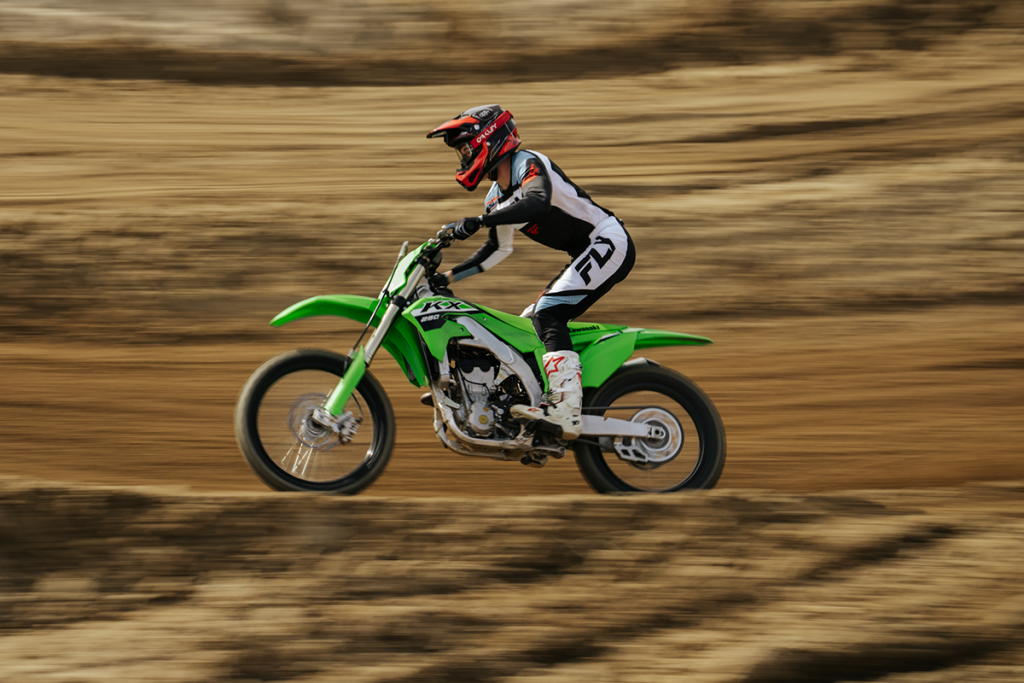
The YZ engine is different. On paper, there are very minimal changes that should lead to it running any differently from the 2023 and previous engine, but on the track it’s very, very different. The old YZF was known for having an abundance of torque and being strong from bottom-mid, but lacking in comparison on top. For 2024 (and with stock mapping), the YZ pulls much stronger and further on top, but lacks down low and is more similarly in-line with a lot of the other 250F’s. Is this better or worse? It depends on who you ask and what you’re looking for. A lot of our testers agreed that it’s a more “fun” power and is an exciting engine to ride, but it takes a little more work and you have to be more thoughtful with your shift points.
The YZ transmission is an area we feel could use a little improvement. With it not having quite the amount of torque as it did before, we find it hard to use third gear in the corners (most 250F’s can’t), but when we shift down to second gear, we run through it quickly and have to make a quick upshift into third. We played with gearing and went down one tooth on the rear to a 49T, but depending on the track, it didn’t fix what we were looking for. Ideally, we’d like a little longer second gear in this bike so we could pull it slightly longer and not have to immediately make a shift directly out of a corner. It’s not a deal breaker by any means, but it is something we noticed and could see some improvement from on the new bike.

What really separates the Yamaha from the Kawasaki is the broad range of power delivery it can offer through the use of the GYTR Power Tuner App. The Kawasaki has three couplers available, but you’re stuck to those three modes and they can’t be changed on the fly. The Yamaha app continues to deliver and we were able to get a lot (but not all) of the lower end power that we liked on the old motor by playing with some maps seen below.


Suspension
The KX250 relies on KYB components similar to the YZ, but offers a totally different feel. The forks in particular are very stiff and are what held this bike back for most of our testers – even those who are faster. The stiff front end suffers from an unsettled feeling, riding high in the stroke and not settling in for corners. Dropping the fork spring rate alone will help for riders under ~180 lb range, and it’ll help the overall balance of the bike as the fork overpowers the shock in stock trim. Having ridden on revalved suspension on this bike in the past, we know it’s plenty capable, but the stock setting is a bit aggressive for most riders.
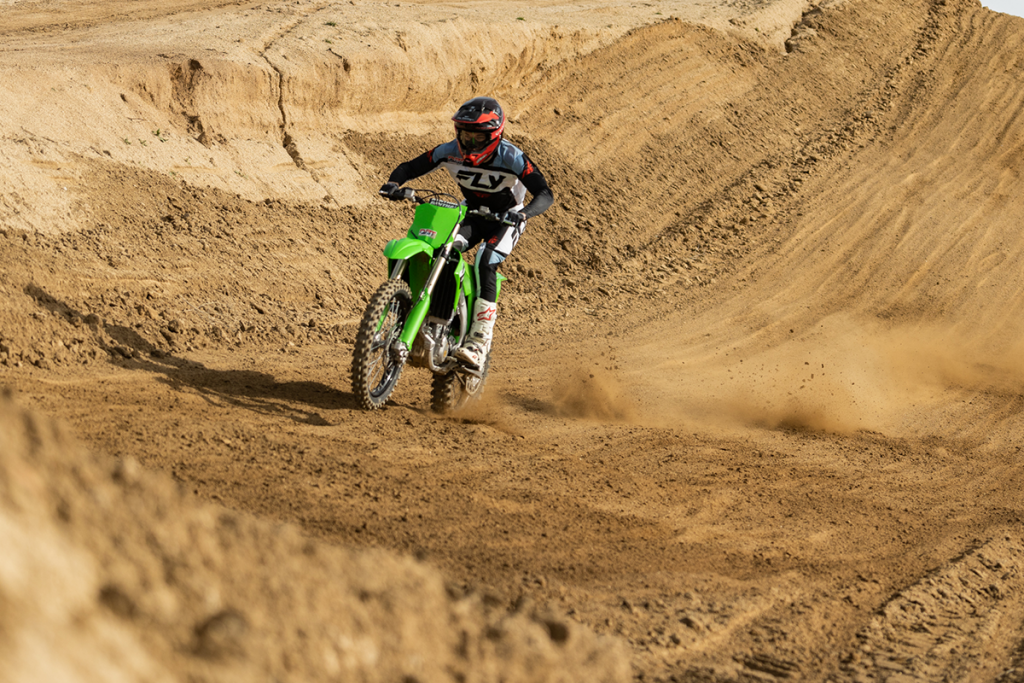
On the opposite end of the spectrum, the YZF suspension is pretty good, though the front forks are on the softer side. The forks have a tendency to get low and deep in the stroke at times. We felt that by dropping the forks to a 3mm fork height (vs the stock height of 7mm), it helped with the balance and the lower fork height “stiffens” the fork up in a way. We did this more for a chassis balance fix (which we’ll get to later), but it did end up helping the fork performance slightly. Overall, Yamaha has a solid suspension package that offers a lot of comfort and pleases a wide range of riders varying in skill levels and sizes.
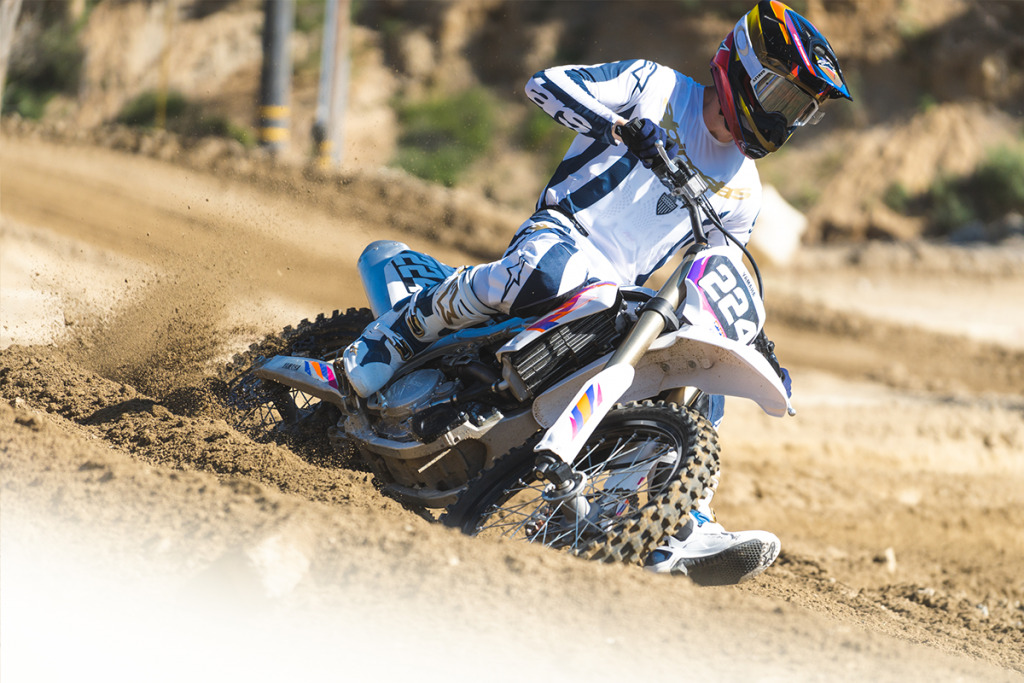
Chassis-Handling
The KX chassis is one of the more comfortable chassis in the class. To start, just sitting on the bike feels at home and is a standout feature for many of our riders. It has a narrow feel to it, which boosts its lighter weight feel on the track, and the entire rider triangle is accommodating for riders of a lot of sizes. In addition, the Kawi offers very good bump compliance through the chassis, soaking up hits without transferring the unwanted feedback to the rider or getting out of line and deflecting.
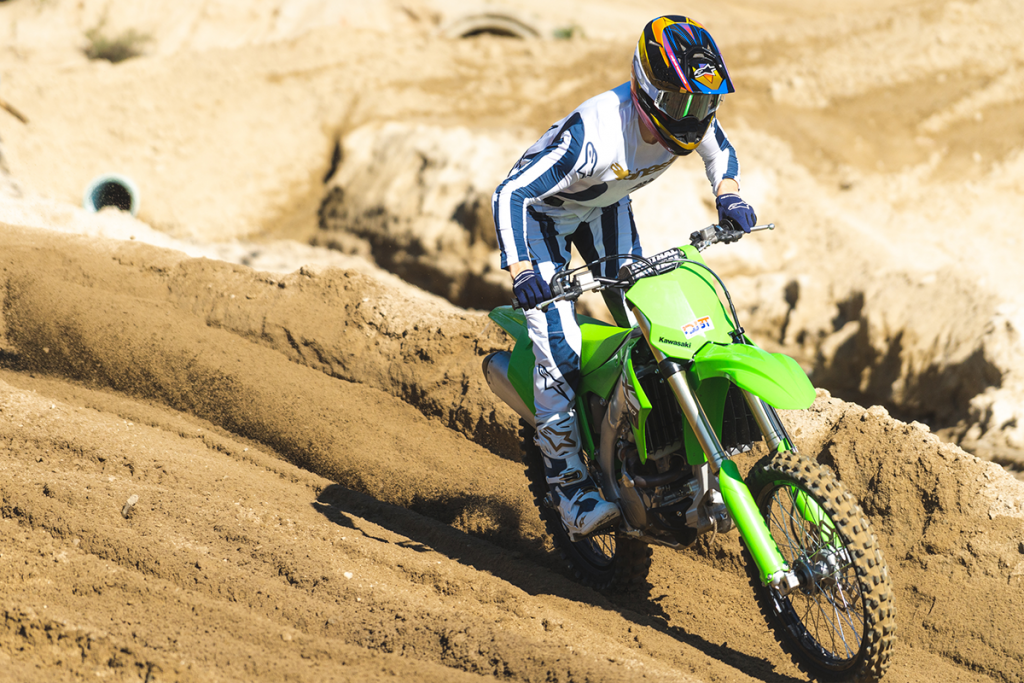
In tune with the narrow chassis, the bike is very receptive to maneuvering through weighting the pegs and making quick direction changes. The snappy engine power furthers this feeling as you can blip the throttle and get the bike going in the right direction. This Kawasaki chassis is very rider friendly with an ample blend of stability and cornering prowess. Straight line stability is on par with any other bike in the class, if not better, and while it’s not the best cornering bike, it corners well enough.

The Yamaha chassis is all new for the 250F this year and for the most part, we like it better. The rider triangle is much more accommodating than years past with an opened up cockpit that fits average sized riders better. As far as the on-track performance goes, the new bike is much more nimble, corners very well, and feels significantly lighter than before. All of these are positives and lead to a more fun and exciting bike to ride. However, we did feel there is a small loss in stability at speed. On some tracks, this was never a factor as they aren’t fast enough or rough enough to bring this out. But at some of the faster tracks like Glen Helen and others we tested at, we got some head shake in the front end and the bike was unsettled at times.
As mentioned previously, dropping the forks to 3mm above the clamps helped tremendously with the stability and most of our riders felt the bike still cornered well. The 3mm fork height was the happy medium in stability and cornering precision, though if we were just riding a tight track where stability isn’t a concern, the 7mm fork height wasn’t an issue.

Conclusion
In the end, most of our testers, though not all, preferred the Yamaha slightly over the Kawasaki as a better overall package right out of the gate. The biggest hiccup with the KX is an overly stiff front fork that left the bike feeling unsettled and lacking comfort for a majority of our testers. Having experience with the Kawasaki in previous years, we know how good the bike can be with just a little bit of suspension work, but in stock trim as we tested both of the bikes, it hurt the ranking amongst most of our riders. Of course, getting some suspension work done is a rather common mod in the dirt bike world, so if there are plans for that no matter what bike you get, this becomes a little less relevant.

Yamaha’s updates are a bit decisive in if they are “better” or not, but most of our riders do feel it’s a step in the right direction and the overall bike is now “more fun” to ride in the current platform. However, both bikes truly are good with potent engine packages, good suspension components, and well-handling chassis’ and both will put a smile under your helmet with every ride.


